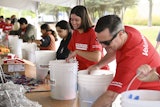Safety headlines grab attention with catastrophe, accidents, fines, and pointing fingers. Today, April 15th, marks the 103rd year anniversary of one of the most talked about safety tragedies of 20th century. The sinking of Titanic killed more than 1,500 passengers and crew, shocking the world, as it had been touted as the safest ship ever built – up to that point.
What we don't talk about as much are the lessons learned from past mistakes. We don't celebrate the improvements, ideas generated, shared, and implemented for future use. It can be difficult to measure potential energy, such as the accidents or deaths avoided without some type of benchmark.
Here are 5 lessons about Titanic that impacted the safety of future vessels.
1. Outdated Standards and Requirements
- Titanic only supplied with enough life boats/jackets for half of its maximum number of passengers. The Board of Trade had no safety regulations in place for a ship of that size. The only requirement in place was the 1894 Merchant Shipping Act, which required that the number of lifeboats be in direct proportion with the ship's gross tonnage. That rule may have sufficed, however, the act only provided calculations for ships up to 10,000 tons, in which 16 life boats were required. Titanic was about 46,000 tons, and carried 20 lifeboats.
2. Lack of Training
- 20 lifeboats available were not used to full capacity. At least four lifeboats were filled at 50 percent capacity or less. One lifeboat had capacity for 40 people but only carried 12. The lifeboat drill that was scheduled to take place the day it hit the iceberg, was cancelled by Captain Smith. There is speculation that this training could have impacted the outcome of the emergency escape, potentially saving more lives.
3. Adequate Tools and Protection
- The ship was short on safety supplies. Some officers that were on bridge did not havebinoculars or search lights. This fact, among many others, may have contributed to the officers only having 37 seconds to react before they hit the iceberg. Each minute gained could have saved hundreds more lives
4. Emergency Backup
- There was another ship, Californian, within 30 miles of Titanic, that saw flares and heard emergency response requests. During investigations after the Titanic sinking, the U.S. Senate Subcommittee and the British Board of Trade both concluded that Californian could have rescued some of the 700 people that were left floating in the water for three hours before Carpathia made it to pick up the survivors. Why the Captain of Californian decided not to respond, and went back to sleep has different historical explanations. Some say he didn’t realize the seriousness of the situation, or that there was a miscommunication, while others claim it was negligence. Later the Vessel Emergency Response Plans were implemented by governing agencies in the U.S. and U.K. These plans included but are not limited to required training and emergency response from nearby vessels. (UK, 2008)
5. Agencies Formed and Protocol Set
- The first International Convention for the Safety of Life at Sea SOLAS convened November 12, 1913 in response to the disaster of Titanic. A treaty was signed by the conference in January of 2014, resulting in the formation of the International Ice Patrol. The United States Coast Guard formed this agency to monitor and report on the location of North Atlantic Ocean icebergs that could pose a threat to transatlantic sea traffic (Organization, 2015). SOLAS has gone under revision six times since its inception to stay updated with technology and capabilities.
Lessons have been learned from the 1,500 lives lost that fateful night. From increased training, and appropriate personal protection, to standardizing requirements for emergency procedures— maritime safety has improved, and many lives have either been saved or weren’t put in danger due to our actions. Agencies hold private and government vessel and barge operations accountable to meticulous standards, in order to avoid disaster like Titanic.























